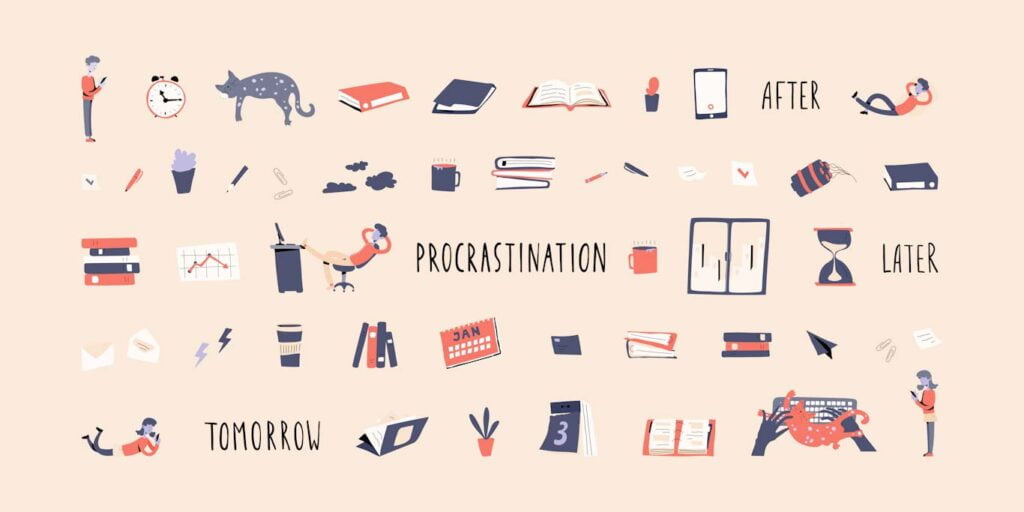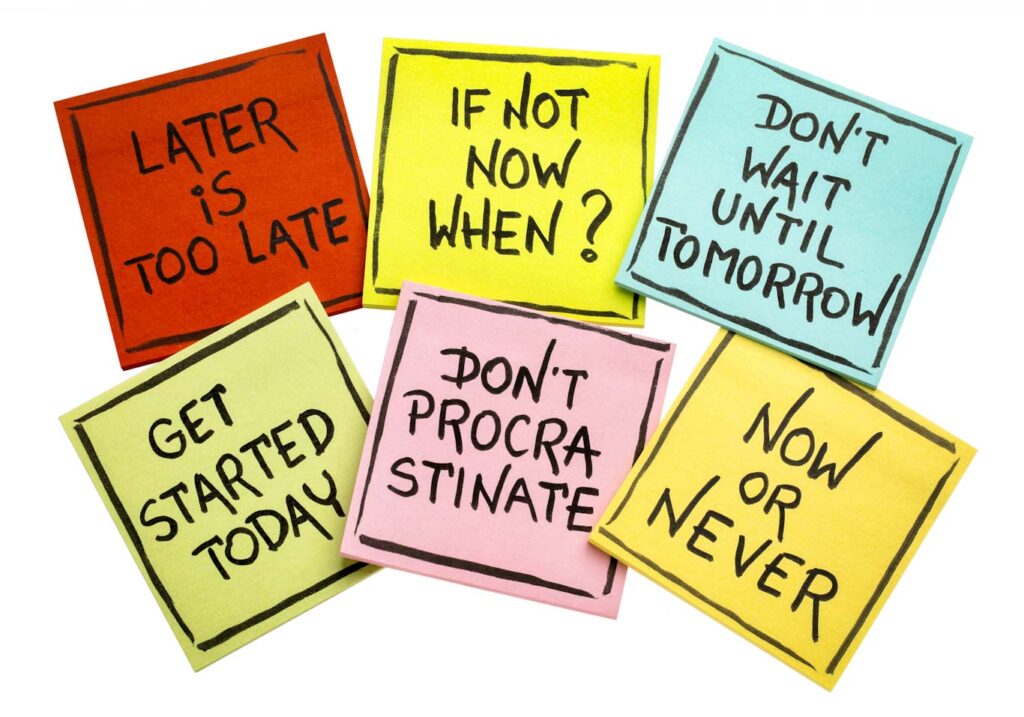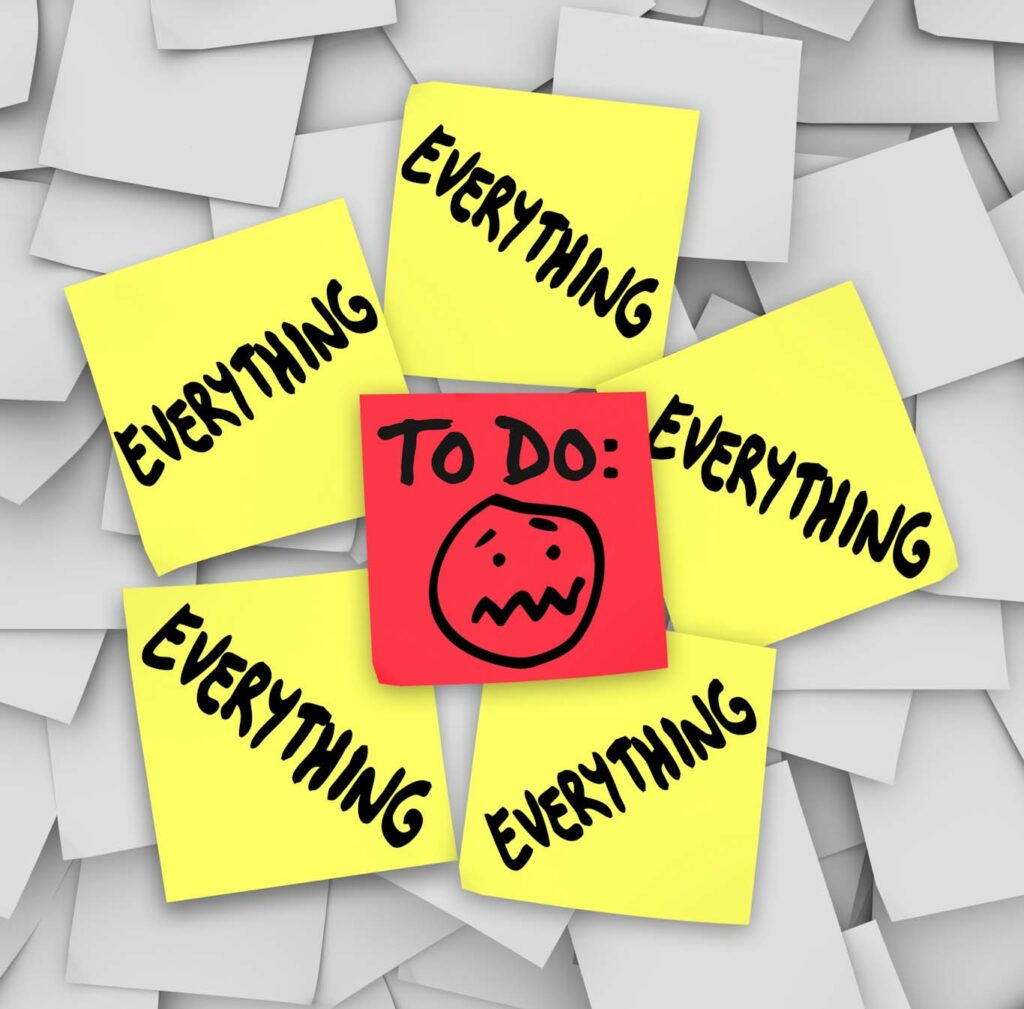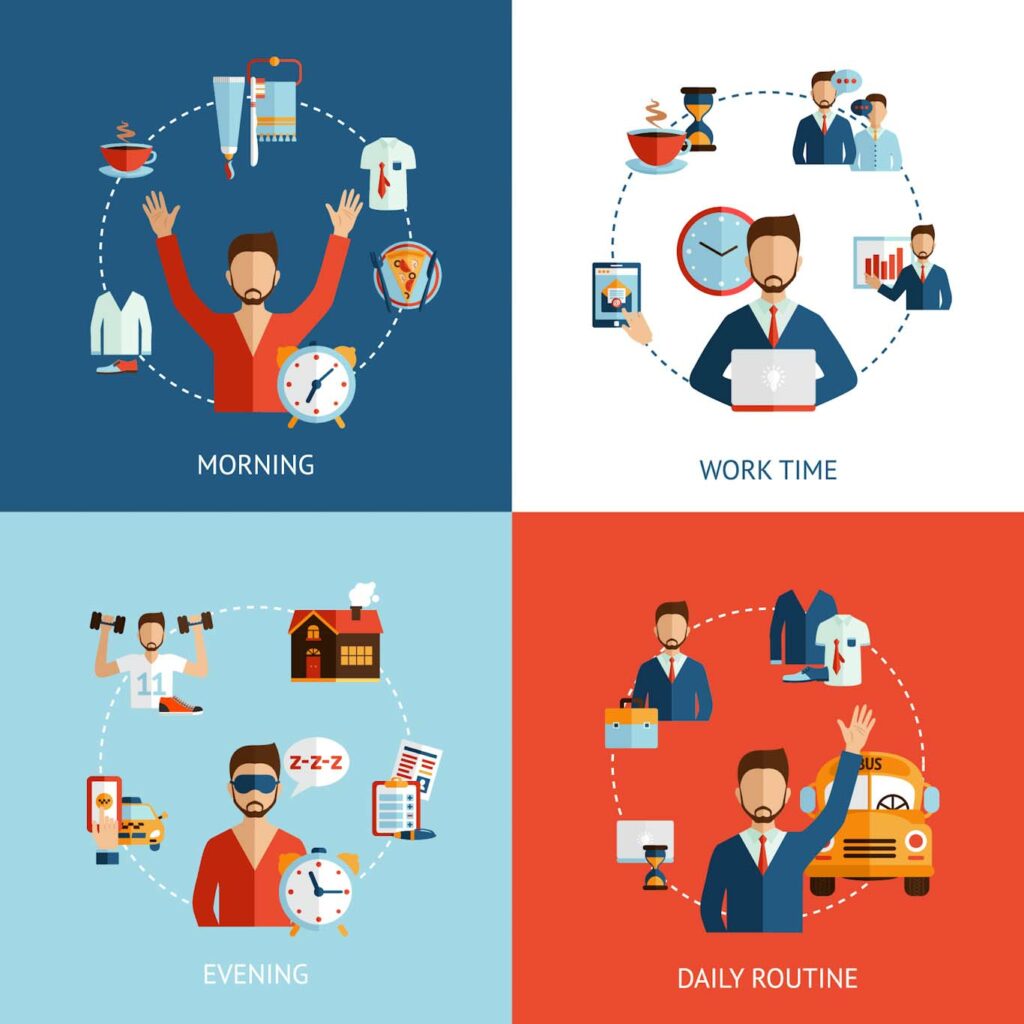
You know you’re supposed to work on a project. However, instead of getting started, you loaf around your inbox and social media apps. You simply don’t feel like doing anything.
What is procrastination for an average remote employee? Well, it starts with the simple thought that you still have time. You put off important tasks and wait until it is too late. When you’re approaching the deadline, you start to panic and wish that you had more time—which you would have had, if you hadn’t been procrastinating.
Any responsible employee aims to become productive and efficient at their job. Despite putting off their tasks, people still sincerely want to learn how to stop procrastinating. In this post, we are going to show you how to overcome this problem by dealing with the root cause.
TL:DR – How to Stop Procrastinating
- Identify the Root Cause of the Issue: Determine the factors that cause you to delay your tasks. Solving the problem requires introspection and complete honesty.
- Break Tasks into Smaller Chunks: To avoid getting overwhelmed by bigger projects, break them into smaller and actionable tasks. Be specific with the tasks you add to your to-do list.
- Observe Your Work Behavior: Identify your productivity cycles and schedule challenging tasks at your peak times.
- Create a Work Routine: Consider your productivity cycles and create a daily routine that works best for you.
- Use Strategies for Managing Time: Try the Pomodoro Technique which lets you organize your workflow. For every 25 minutes of work, you will take a 5-minute break.
- Boost Your Energy: Keep yourself hydrated, get enough sleep, eat healthy, and exercise.
Procrastination Definition

Psychology professors discuss what it means to procrastinate:
Procrastination is a form of self-regulation failure characterized by the irrational delay of tasks despite potentially negative consequences.
Despite knowing the consequences of procrastination, an individual still delays their tasks until the last minute, or even past the deadline.
How Common Is Procrastination?
DePaul University professor Joseph Ferrari said that around 20% of adults in America still engage in chronic procrastination. Students are the common subjects of studies related to this behavior. However, considering the current economic climate, we must look at how the workforce is faring in this area.
Writer and entrepreneur Darius Foroux conducted an online survey through his newsletter. When the data was collated, he learned that out of the 2,219 participants, 88% admitted that they procrastinate for at least an hour daily. 34.6% said that they put off tasks for 2 to 3 hours, while 16.2% said they do the same for 3-4 hours.

Why do workers procrastinate? Well, Ferrari mentioned this behavior has to do with irrational beliefs, low self-esteem, depression, and fear of failure, among other things. For many, it is a self-protective strategy. In case a person fails, they’d use “not trying” as an excuse for the result. Unfortunately, the effects of procrastination are bigger than the stress they’ve been avoiding.
How to Overcome Procrastination
If you want to stop procrastinating, you must establish your goals. Then, think of how delaying your tasks will prevent you from achieving them. In the following sections, we will show you some of the most effective strategies for overcoming procrastination.
Determine the Root Cause of the Issue
You may wonder, “Why can’t I stop procrastinating?” Well, to gain a deeper understanding of this behavior, you must look into the nature of the problem. Here are three factors to consider when assessing your behavior:
- When: Ask yourself what particular situations cause you to delay your tasks. During what time of the day are you unproductive? At what point do you start struggling to complete your tasks?
- How: Determine what you do whenever you procrastinate. Do you turn your attention to other activities like browsing the news, posting on social media, or playing video games?
- Why: Ask yourself what’s causing you to put off your tasks. Do you find yourself overwhelmed with the difficulty of the job? Do you seem to get distracted often?
Keep in mind that there are many reasons why people procrastinate. For some, it has to do with the lack of motivation, especially when they know that rewards are far in the future. Individuals with polarized thinking tend to put off tasks because they fear failure or they are too obsessed with perfectionism. So, at the beginning of your journey, you have to introspect and determine why you are procrastinating.
Break Tasks into Smaller Chunks

If you’re procrastinating because you feel overwhelmed with big projects, take some time to break them into smaller tasks. Let’s say you’re organizing an annual conference. Instead of looking at it on a grander scale, create a to-do list that consists of smaller and immediately actionable items. For instance, you can start by asking for quotes from local hotels or researching appropriate keynote speakers.
Also, when you create your to-do list, it’s advisable to start with a clear action verb—as if you were giving yourself directions. Some examples can include, “contact possible keynote speakers,” “research best caterers in the area,” and “submit the budget proposal to executives.” Also, avoid using vague words like “plan” or “organize.” When you become more specific with your tasks, it will be easier for you to take action.
Observe Your Work Behavior
We all have our own productivity cycles, with some powering through their tasks in the early morning and others during wee hours of the night. So, one of the best ways of learning how to avoid procrastination is by identifying your peak times. Observe your behavior and determine the times of the day when you feel most productive. Then, organize your tasks, ensuring that you do most of the work during the hours that you can power through your work.

You must also identify your slump times, or the hours when you are least productive. Make sure that the easy and simple tasks are scheduled for those periods. Now, if you’re struggling to determine your productivity cycles, we recommend that you use Traqq. Aside from functioning as a time tracker, this tool also works as a productivity monitoring app. On the dashboard, you will see your productivity levels throughout the day. You can easily identify your peak and slump times, because high activity levels are coded in green, normal levels in yellow, and low levels in red.
Create a Work Routine

One of the ways to stop yourself from procrastinating is by establishing a consistent work routine. For instance, if you feel most productive during the morning, start your day by doing your most important tasks. By working on the most complicated items while you still have a clear head, you’re able to achieve more.
Remember to take your productivity cycles into account when establishing your daily routine. Just because your colleague says that jogging during their lunch break helps them power through tasks, it doesn’t mean that it will work for you. If you usually feel tired after running, you may want to put off exercising till the end of the day when you’re done with work. A study conducted by psychology experts in Germany revealed that establishing a routine is especially helpful for people with erratic sleep schedules. After all, when a person is sleep-deprived, they are more prone to procrastinating.
Get Rid of Procrastination Pit-Stops
If you find yourself delaying your tasks, then perhaps, it’s because you’re making it easy to procrastinate. In this case, you must identify the apps and websites that eat up your time. If you are unaware of what your procrastination pit-stops are, we recommend using Traqq. This tool will also monitor the apps you use and the websites you visit. When you go to the dashboard, you will see a pie chart that illustrates what you spend the biggest chunks of your time on. So, if you’re loafing around news websites, you can easily identify this through Traqq. In most cases, the best way you can learn how to not procrastinate is by sparing yourself from the distractions.
Use Strategies for Managing Time
There are plenty of time management techniques that will make it easier for you to get your work started. For instance, you can try the Pomodoro Technique which will help you organize your workflow. With this method, you work on your tasks for a pre-determined period (i.e. 25 minutes). Once that period is over, you will take a short break (i.e. 5 minutes). Once the break is over, you will start the cycle again. You can also take a longer break when you’ve completed a specific number of cycles.
Boost Your Energy

One of the best ways to pull yourself out of the slumps is by increasing your energy level. Remember that when you’re tired, you’re more prone to procrastination. Here are some tips to boost your energy level:
- Keep yourself hydrated—Your concentration at work can be affected when you’re dehydrated. The good news is, you can easily solve this problem by drinking a glass of water. You can also drink other beverages but do so in moderation. For instance, if you consume too much sugar or caffeine, your energy levels may crash within a few minutes or hours.
- Get adequate sleep—As we’ve mentioned, sleep deprivation is one of the reasons why some people are prone to procrastinating. Part of establishing a work routine is making sure that you also have enough sleep. By scheduling your sleep, you are also improving other aspects of your life, including your physical and mental health.
- Eat healthy—It’s hard to get to work when you hear your stomach grumbling. So, when you feel hungry, eat something to increase your energy. Also, remember to avoid eating junk food as it will only give you an energy spike for a short while, but then make you feel tired immediately. Instead, research about foods that boost brain power, concentration, and focus.
- Exercise—Try to get your body moving, especially if you’ve been sitting for several hours in front of your computer. You don’t have to do anything complicated like lifting weights or performing circuit training. Sometimes, all it takes for you to feel better is a bit of stretching or some breathing exercises.
Conclusion
Hopefully, these tips have given you new motivation to transform your work behavior. Remember that the change starts with you. Actively work on creating new habits and take the time to develop your routine. Amidst all these, don’t be too hard on yourself. Remember that some days are easier than others. However, if you are consistent in avoiding procrastination, you will see results along the way.
